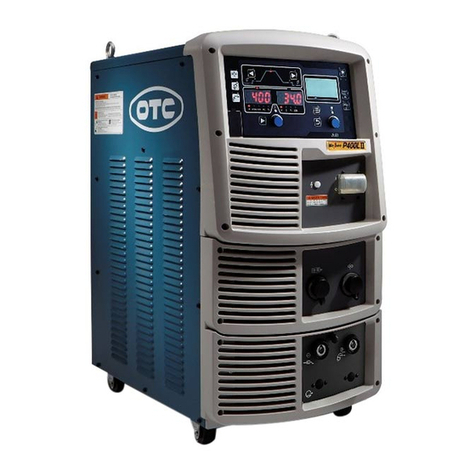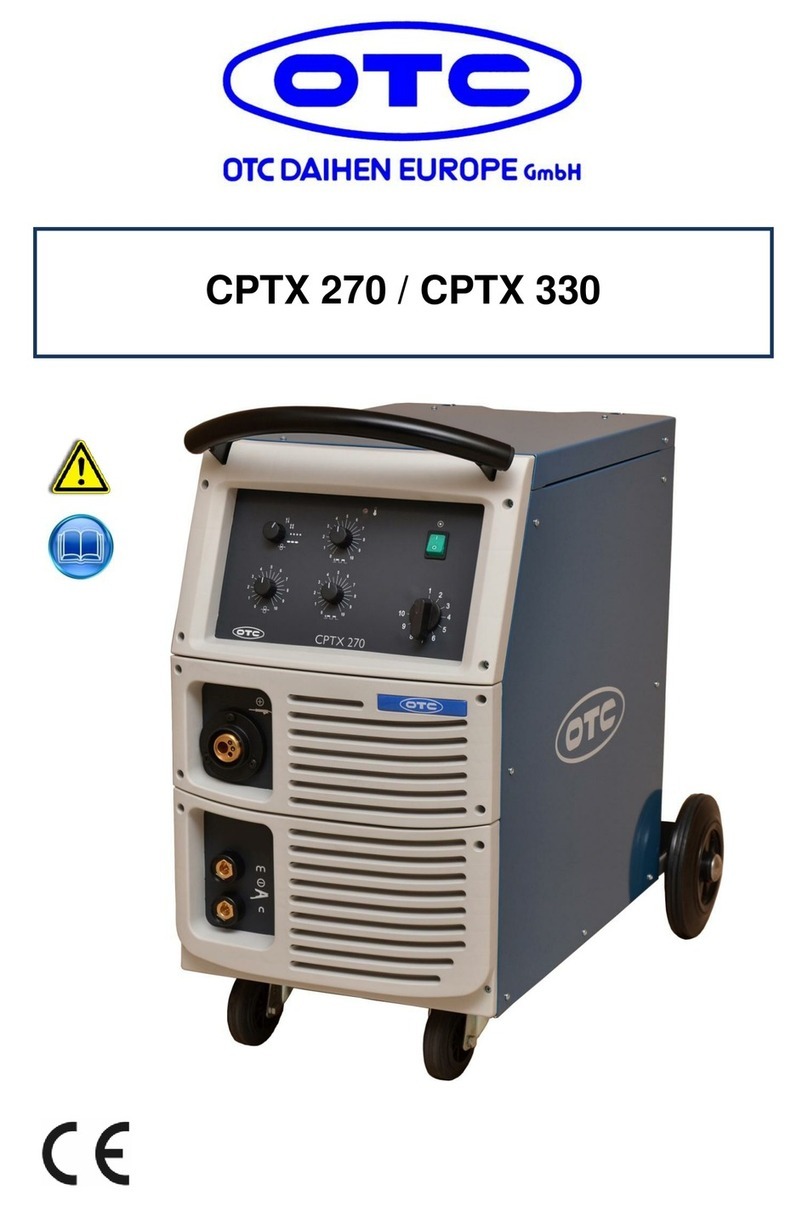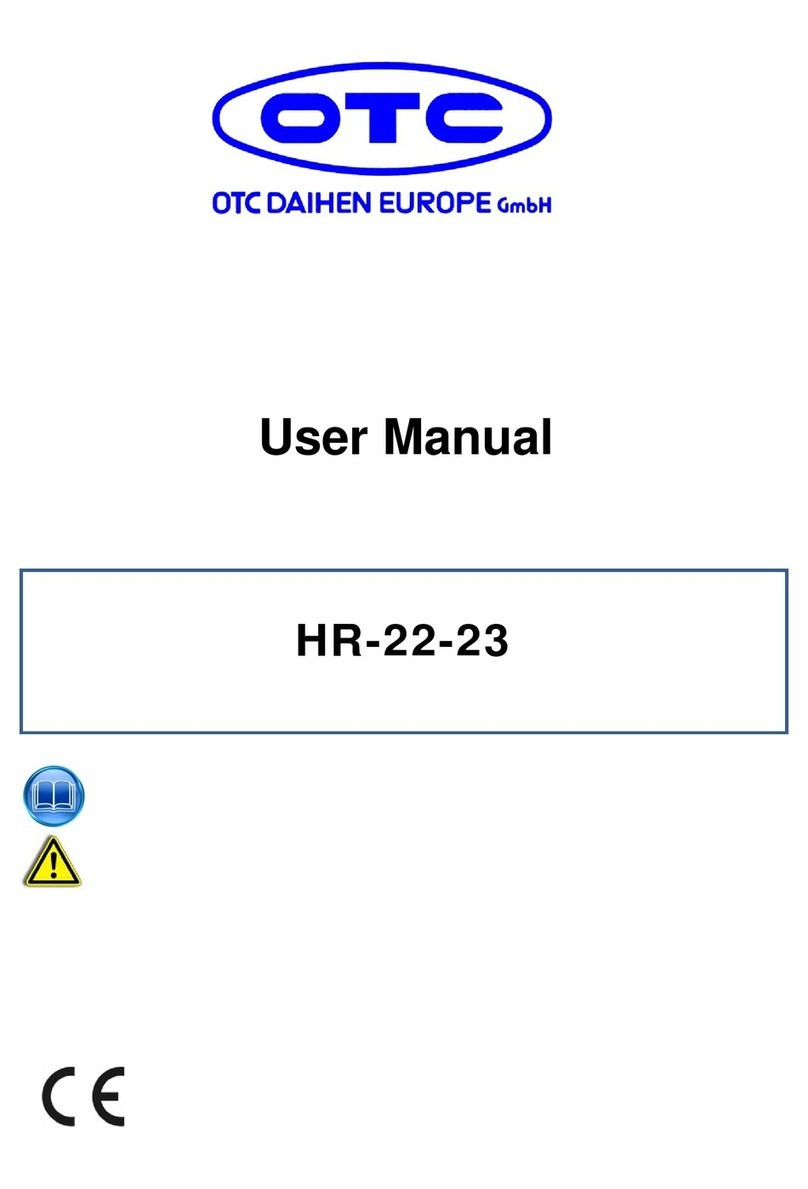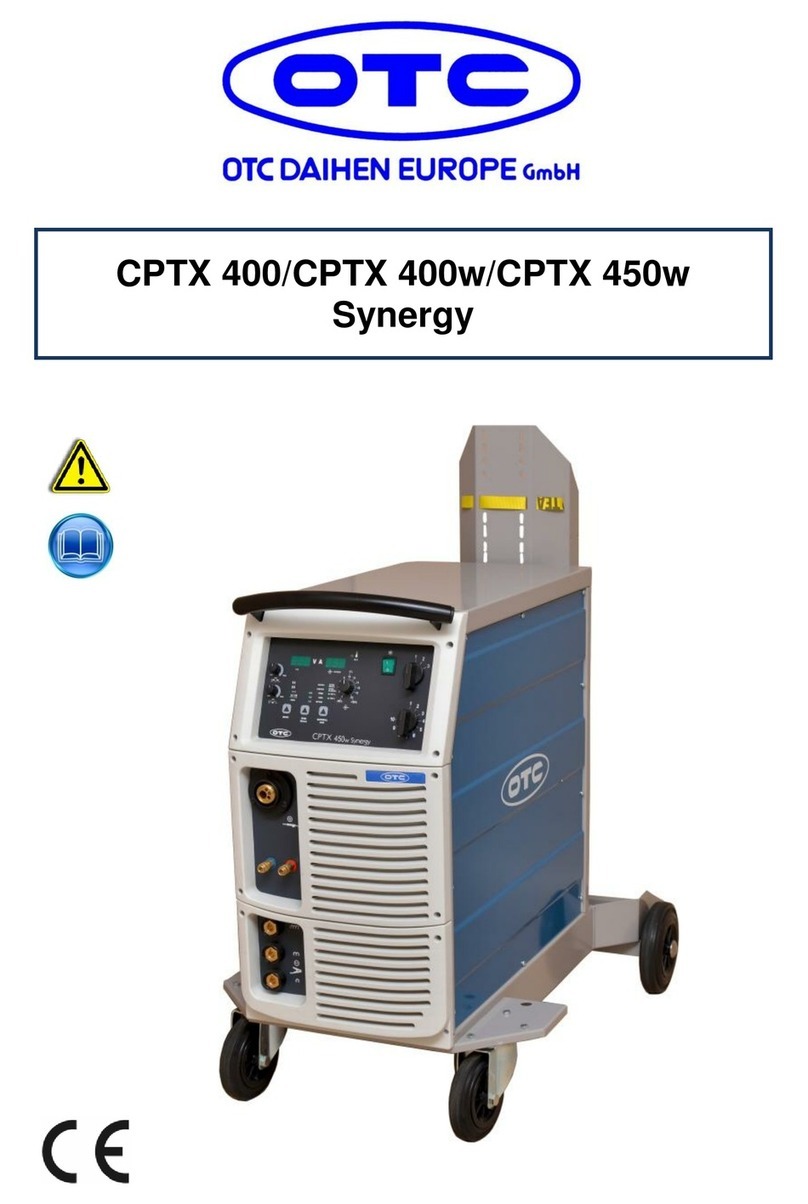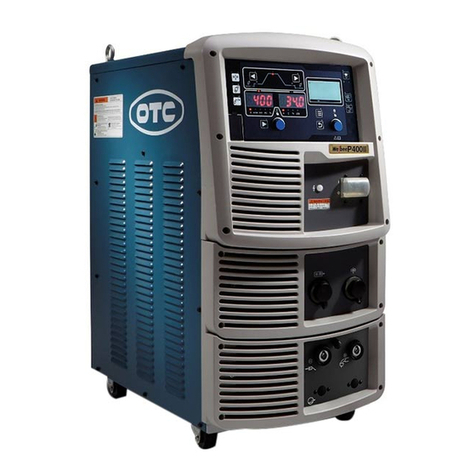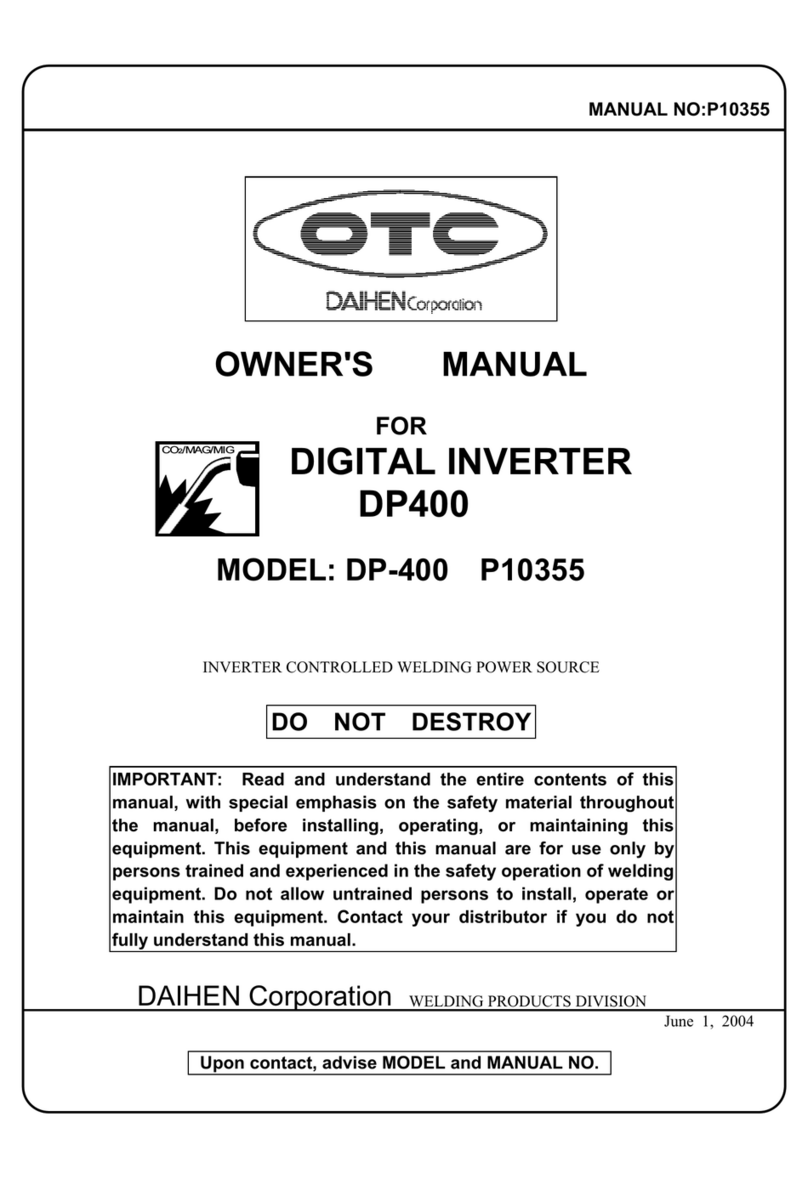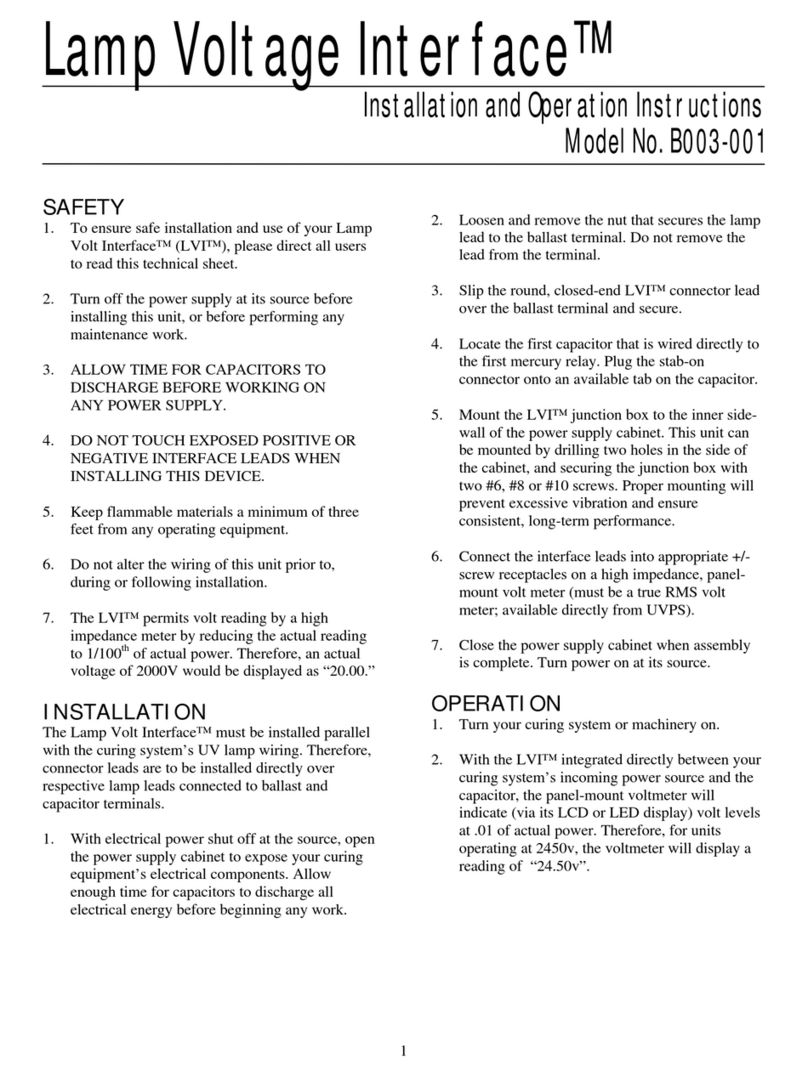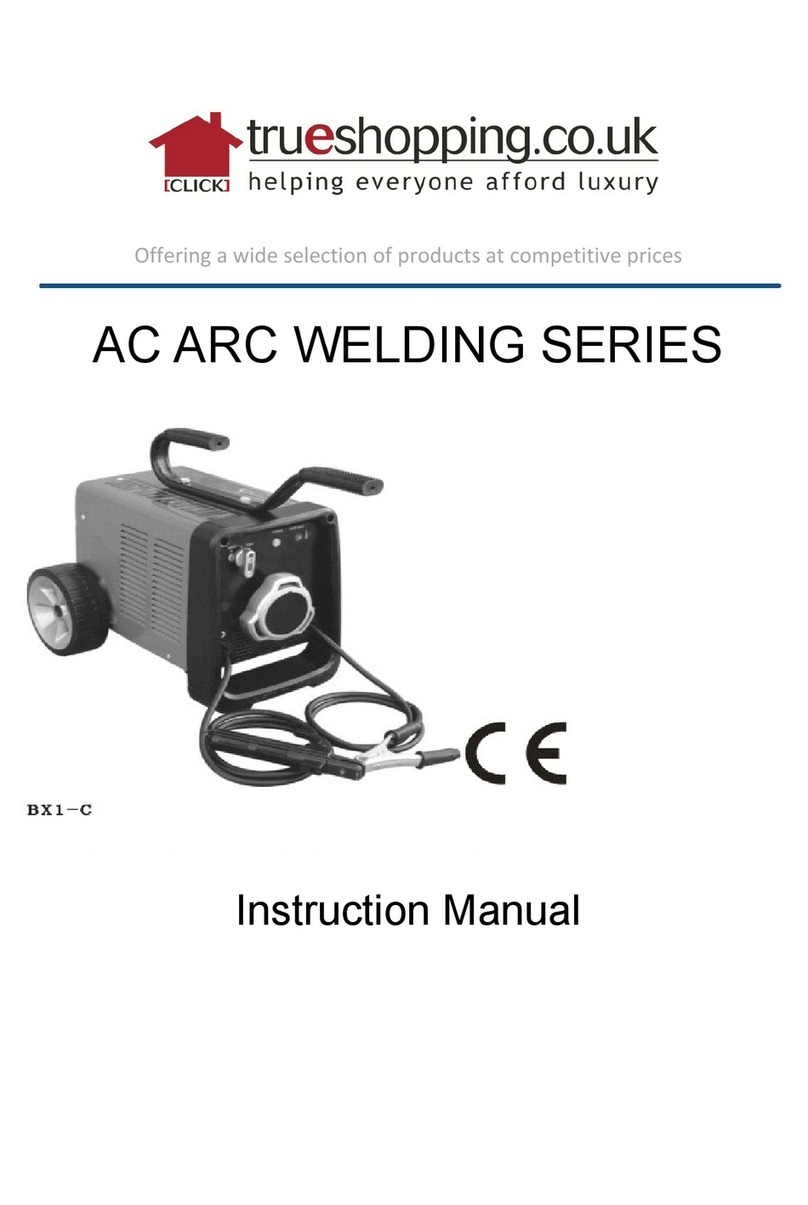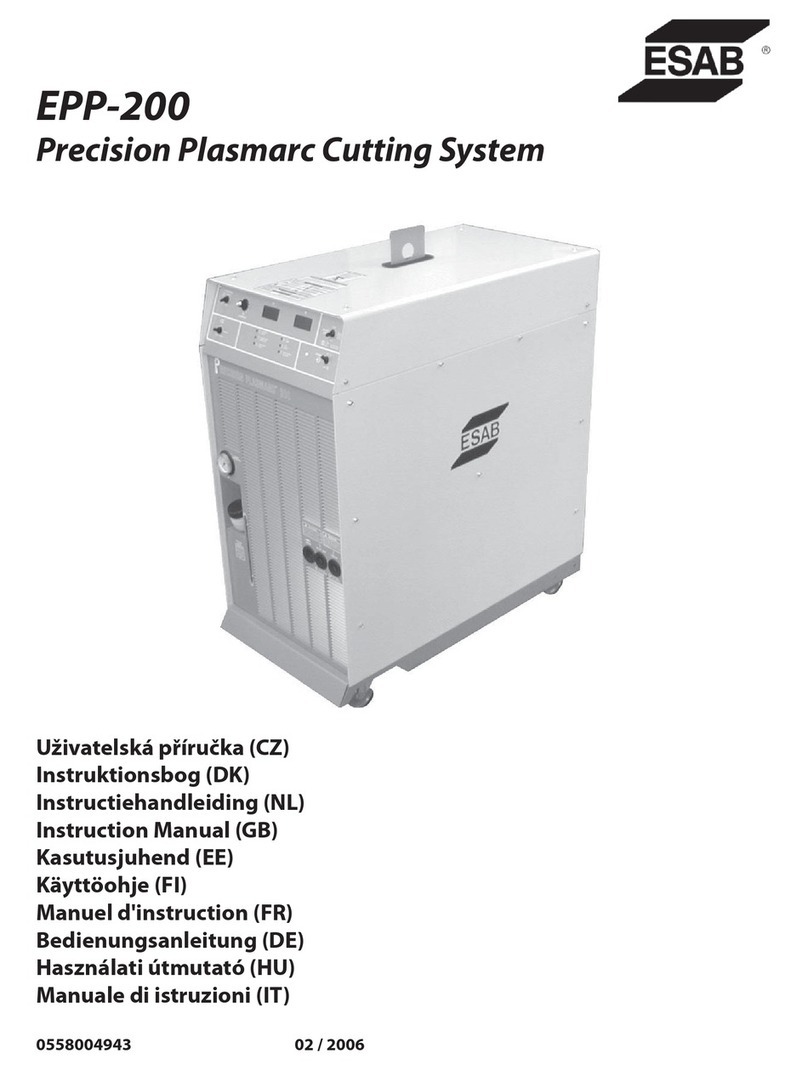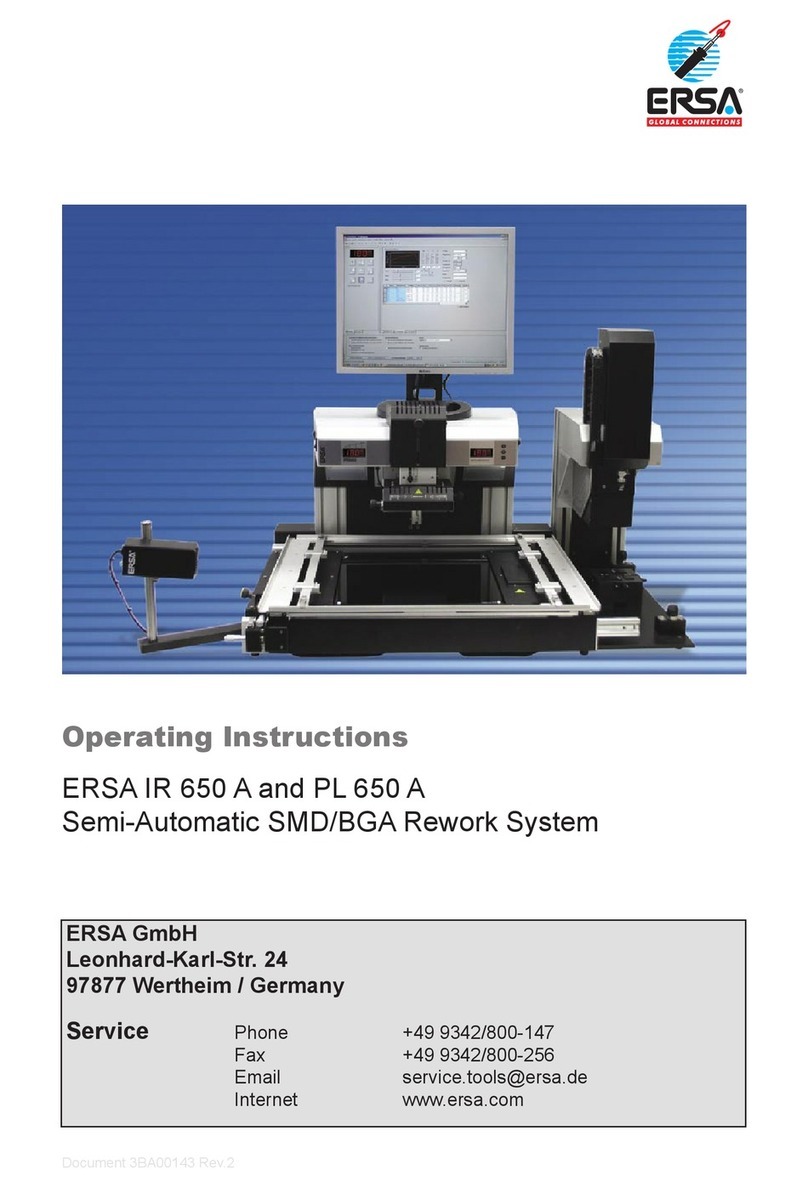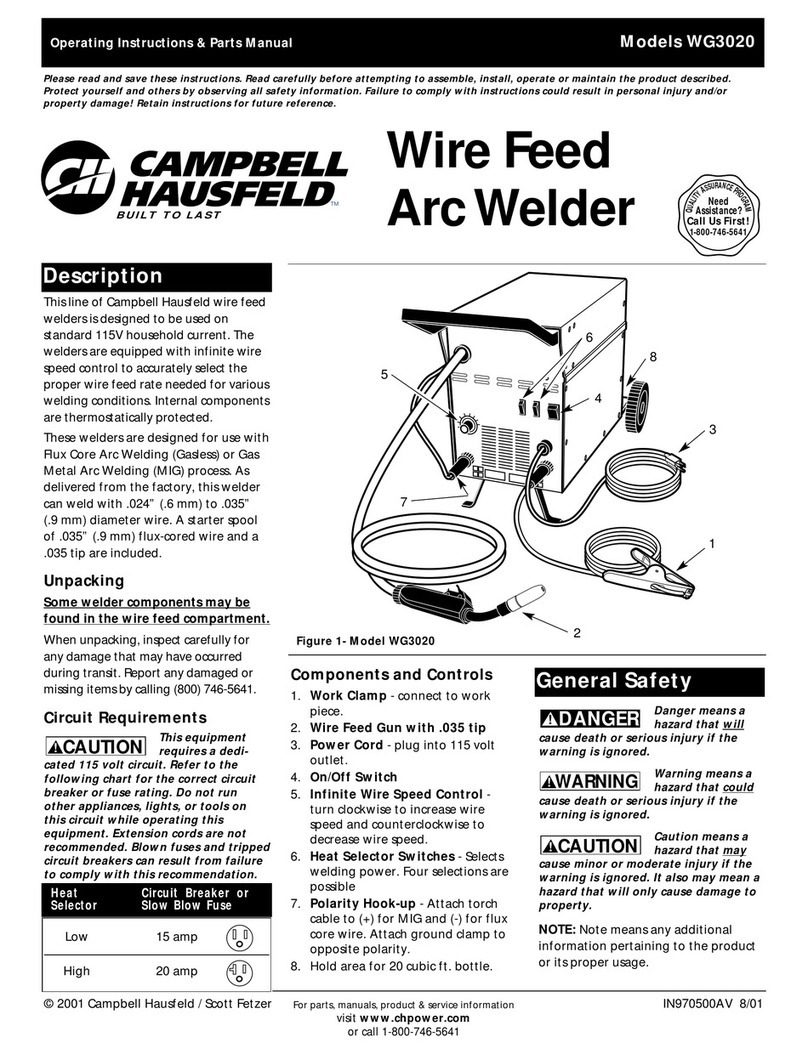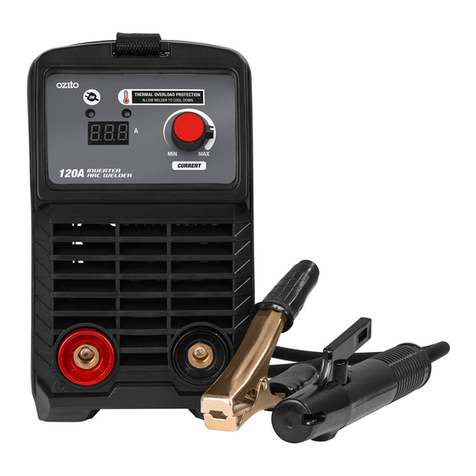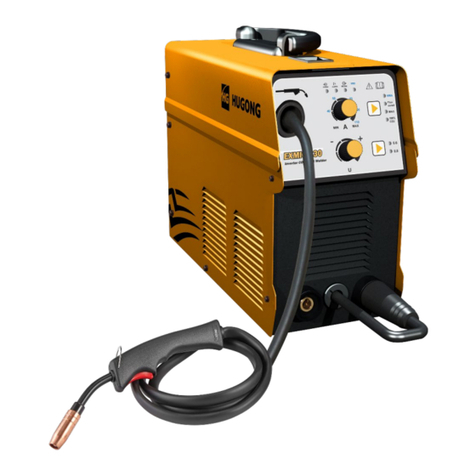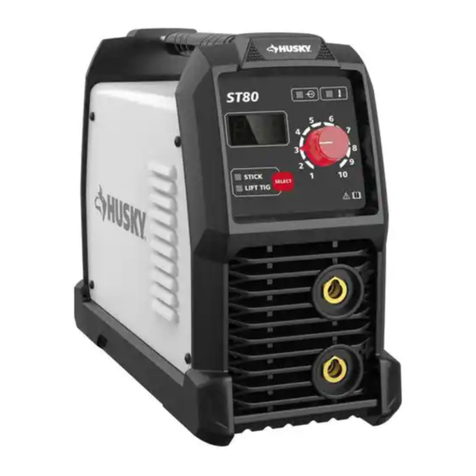
7
$%/(
2)
&
217(176
2
7$%/(2)&217(176
)RUZDUG
6HUYLFHDQG6XSSRUW
,PSRUWDQW,QIRUPDWLRQ
8VHRIWKH3URGXFW
6DIH8VHRIWKH3URGXFW
&RS\ULJKW
:KHQ([SRUWLQJWKH3URGXFW
'LVSRVDORIWKH3URGXFW
&+$37(5 6$)(7<,1)250$7,21
:DUQLQJ6\PEROV
6DIHW\3UHFDXWLRQ
2SHUDWLQJSUHFDXWLRQV
3UHFDXWLRQVIRUSRZHUVXSSO\DQGHOHFWULFVKRFN
3UHFDXWLRQVIRUKDQGOLQJRISODVWLFSDUWV
3UHFDXWLRQVIRUGLVDVVHPEOLQJDQG
PRGLI\LQJWKHZHOGLQJSRZHUVRXUFH
3UHFDXWLRQVIRUDLUGLVFKDUJHDQGXVHRIUHVSLUDWRU\
SURWHFWLYHHTXLSPHQW
3UHFDXWLRQIRUSURWHFWLYHHTXLSPHQW
3UHFDXWLRQVIRUIODPPDEOHPDWHULDOV
3UHFDXWLRQVIRUJDVF\OLQGHUDQGJDVUHJXODWRU
3UHFDXWLRQVIRUURWDWLQJSDUW
3ULQFLSDO6DIHW\6WDQGDUGV
&+$37(5 352'8&763(&,),&$7,21
$1'&21),*85$7,21
6SHFLILFDWLRQ
6SHFLILFDWLRQV
$SSOLFDEOHZHOGLQJPHWKRG
([WHUQDOGLPHQVLRQV
5DWHGGXW\F\FOH
3URGXFW&RQILJXUDWLRQ
6WDQGDUGFRPSRVLWLRQ
$FFHVVRU\VXSSOLHG
$FFHVVRU\QRWVXSSOLHG
2SWLRQDODFFHVVRULHV
3DUW1DPHV
)URQWSDQHO
5HDUSDQHO
&+$37(5 75$163257$7,21$1'
,167$//$7,21
5HTXLUHG(TXLSPHQW
:HOGLQJSRZHUVRXUFHHTXLSPHQW
9HQWLODWLRQHTXLSPHQWSDUWLDOH[KDXVWIDFLOLW\
,QVWDOODWLRQ(QYLURQPHQW
,QVWDOODWLRQHQYLURQPHQW
(OHFWURPDJQHWLFLQWHUIHUHQFH
7UDQVSRUWDWLRQ3URFHGXUH
7UDQVSRUWDWLRQZLWKOLIWLQJOXJ
0DQXDOWUDQVSRUWDWLRQZLWKFDUWV
&+$37(5 &211(&7,21
3UHFDXWLRQVIRU&RQQHFWLRQ3URFHGXUHDQG
*URXQGLQJ
&RQQHFWLQJWKH:HOGLQJ3RZHU6RXUFH
&RQQHFWLRQRIFDEOHDWRXWSXWVLGH
&RQQHFWLRQRIZLUHIHHGHU
&RQQHFWLRQRIZHOGLQJWRUFK
&RQQHFWLRQDW7,*ZHOGLQJ
&RQQHFWLRQDW'&67,&.ZHOGLQJ
&RQQHFWLRQRIVKLHOGJDV
*URXQGLQJDQG&RQQHFWLRQRI,QSXW3RZHU
6XSSO\
&RQILUPDWLRQRI&RQQHFWLRQ
&RQQHFWLRQRI([WHUQDO(TXLSPHQW
&RQQHFWLRQRIURERW
&RQQHFWLRQRIDXWRPDWLFPDFKLQH
:LULQJRI9ROWDJH'HWHFWLRQ&DEOHDW%DVH
0HWDO6LGH
:LULQJWRZLUHIHHGHU
:LULQJWRZHOGLQJSRZHUVRXUFH
:LULQJH[DPSOHRIYROWDJHGHWHFWLRQFDEOH
&+$37(5 :(/',1*23(5$7,21
3UHFDXWLRQDW:HOGLQJ2SHUDWLRQ
3UHFDXWLRQVIRUDLUGLVFKDUJHDQGXVHRIUHVSLUDWRU\
SURWHFWLYHHTXLSPHQW
3UHFDXWLRQIRUSURWHFWLYHHTXLSPHQW
3UHFDXWLRQVRQZHOGLQJSODFH
&KHFNEHIRUH:HOGLQJ
3RZHU21DQG*DV6XSSO\
:LUH,QFKLQJ
&KHFNDQG6HWWLQJRI:HOGLQJ&RQGLWLRQ
5HDGLQJZHOGLQJFRQGLWLRQ
3UHYHQWLQJHUURQHRXVRSHUDWLRQRQRSHUDWLRQSDQHO
3HUIRUPLQJ:HOGLQJ2SHUDWLRQ
2SHUDWLRQRIZHOGLQJVWDUW
2SHUDWLRQGXULQJZHOGLQJ
2SHUDWLRQDWZHOGLQJHQG
&+$37(5 :(/',1*&21',7,21
/LVWRI:HOGLQJ&RQGLWLRQV
3DUDPHWHU:HOGLQJSDUDPHWHU
)XQFWLRQ
,QWHUQDOIXQFWLRQ
)XQFWLRQRQ2SHUDWLRQ3DQHO
2SHUDWLRQSDQHO
6HWWLQJVFUHHQ
:HOGLQJ&RQGLWLRQV
%DVLFZHOGLQJFRQGLWLRQV
8VHIXOIXQFWLRQV
3UHSDULQJ:HOGLQJ&RQGLWLRQV
0HPRU\)XQFWLRQRI:HOGLQJ&RQGLWLRQV
0HPRU\UHJLVWUDWLRQRIZHOGLQJFRQGLWLRQV
5HDGRXWRIZHOGLQJFRQGLWLRQV
'HOHWLRQRIPHPRU\UHJLVWUDWLRQ
6HWWLQJ:HOGLQJ&RQGLWLRQV
:HOGLQJPRGHVHWWLQJ
6HWWLQJZHOGLQJFRQGLWLRQV
6HWWLQJZHOGLQJSDUDPHWHU
&UDWHUVHWWLQJ
$UFVSRWWLPH
:HOGLQJYROWDJHDGMXVWPHQW
$UFFKDUDFWHULVWLFVDGMXVWPHQW
3HQHWUDWLRQFRQWURODGMXVWPHQW
:HOGLQJJXLGH




















